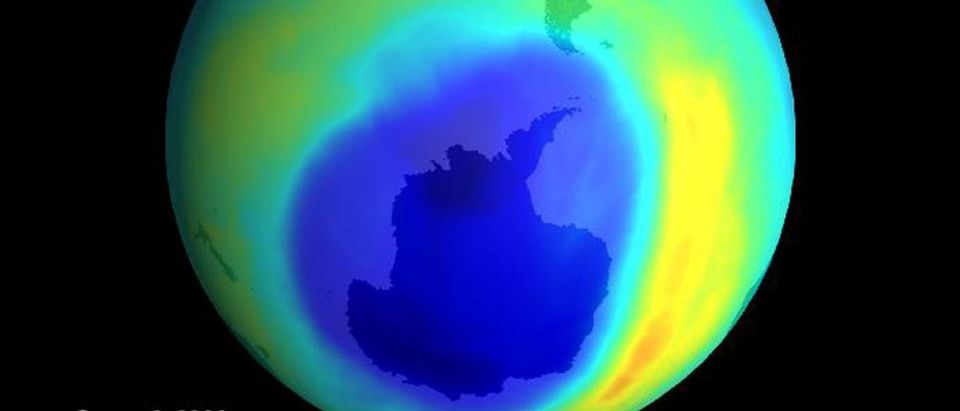A paper published in the journal Science Thursday found the infamous hole in the ozone layer over Antarctica has been shrinking.
The study notes that, if all goes well, the ozone hole could be gone by 2050. But one thing potentially stands in the way of this now repairing ozone: volcanoes. If more volcanoes go active the shrinking could be reversed as active volcanoes spew sulphur dioxide, which deteriorates ozone and its plumes can create what is known as ‘polar stratospheric clouds‘.
Polar stratospheric clouds form between 6-15 miles up when air temperatures hover around -112 degrees Fahrenheit. The clouds induce chemical reactions from man-made chlorine that also eats away at the ozone.
“After an eruption, volcanic sulphur forms tiny particles and those are the seeds for Polar Stratospheric Clouds,” Solomon told Science In Action, part of The British Broadcasting Corporation.
Assessing the improving health of the ozone over Antarctica, Susan Solomon of the Massachusetts Institute of Technology and one of the authors of the study invoked a medical analogy. “First the patient was getting worse and worse, and then the patient is stabilized,” Solomon told the Washington Post Thursday. “And now, the really encouraging thing, is that the patient is really starting to get better.”
Mario Molina and Sherwood Rowland were awarded a Nobel Prize in 1995 for their work in 1974 that initially uncovered the connection between chlorofluorocarbons (CFCs) and ozone depletion. But it wasn’t until a decade later that the ozone hole was first brought to the public’s attention when a team of British Antarctic Survey scientists found it to be 10 percent lower than normal rates.
To be clear, the ‘hole’ wasn’t an actual hole, rather it was a significant depletion of ozone 6 to 15 miles above Antarctica in the stratosphere.
In response to the CFC findings of Molina and Rowland as well as the ozone depletion, The Montreal Protocol was enacted internationally in 1987. The Protocol stated that the production and use of compounds known to deteriorate the ozone (including CFCs) were to be phased out by 2000.
Follow Craig Boudreau on Twitter.
Any tips or info? Email Craig at craig@dailycallernewsfoundation.org
All content created by the Daily Caller News Foundation, an independent and nonpartisan newswire service, is available without charge to any legitimate news publisher that can provide a large audience. All republished articles must include our logo, our reporter’s byline and their DCNF affiliation. For any questions about our guidelines or partnering with us, please contact licensing@dailycallernewsfoundation.org.












